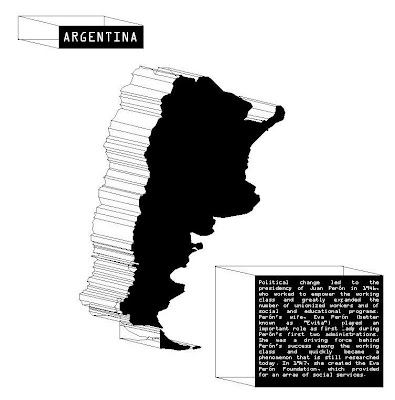These three thematic maps characterize three separate racial categories in their percentages (relative to the total county population) as obtained from the 2000 US Census. In descending order, they show the percentages of people who identified as White alone, Native American or Alaskan Native alone, and those who identified as two or more races. Classifications were based on natural breaks or Jenks and more classes were added to highlight variation.

In the map for whites, some interesting patterns appear. The lightest green denotes areas with the highest percentage of whites, the darkest purple those who chose this category the least. The southwest, west, and eastern seaboard are generally purpler than the interior of the country, though many counties show a surprisingly deep hue of purple- especially in states like Nebraska and South Dakota. Also, in the South where there is surely a high black population there is more purple, (though again a surprising amount to me). Arizona also has an interestingly deep purple part of the state.

When we look at the map of the Native American and Alaskan populations, the oddities of the first map make more sense. The counties in the Midwest and Arizona that are deeply purple in the first map are deeply green in this one, indicating a high percent of Native Americans. There is a high concentration in Montana, North and South Dakota, Oklahoma, Arizona, and New Mexico. Most of the Deep South and Eastern Seaboard lacks a substantial Native American population, a fact that fits the historical context.

The last map shows the percentages of people who claimed two or more races. Purple dominates the western half of the country, especially in California and New Mexico. There is also a purple section in Oklahoma which (based on the previous two maps), seems to be due to the high number of Native Americans living there who have likely intermarried outside of their “race”. Florida, Michigan, and even a bit of the North East also appear to have intermingling- though not quite in the same numbers as the west.

















